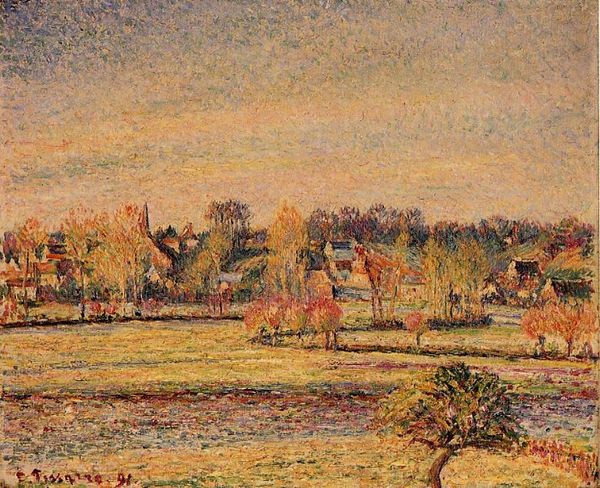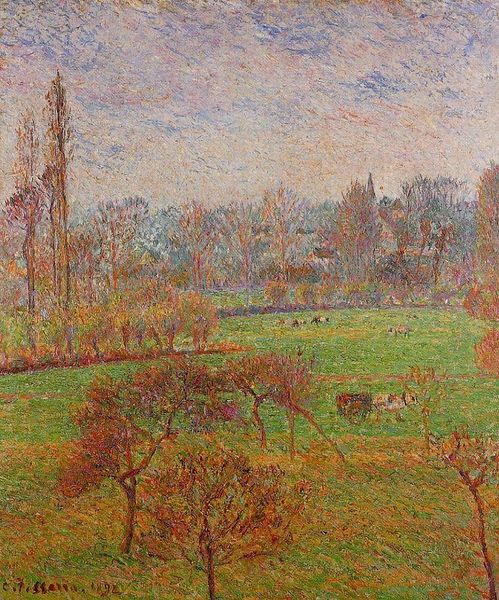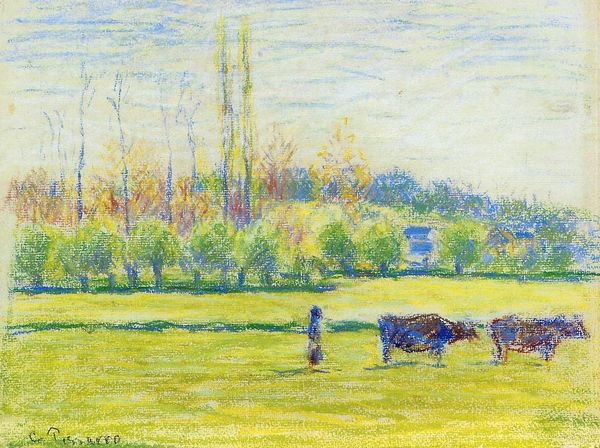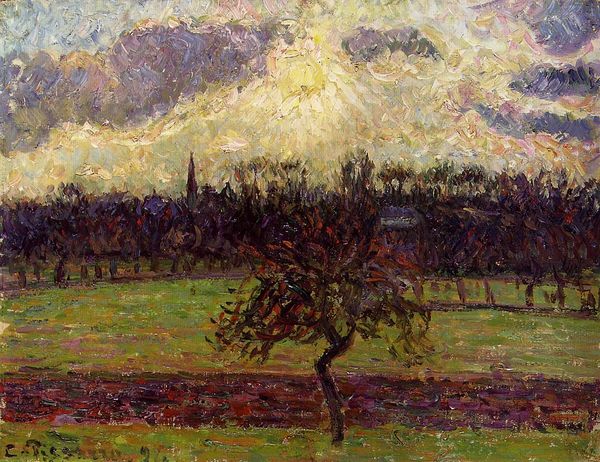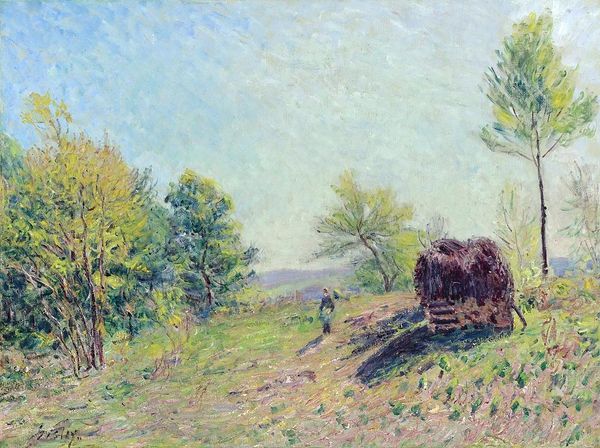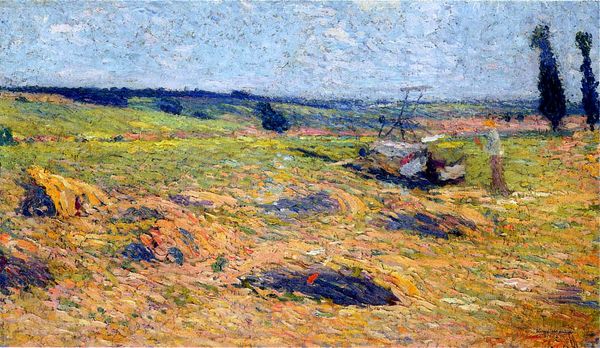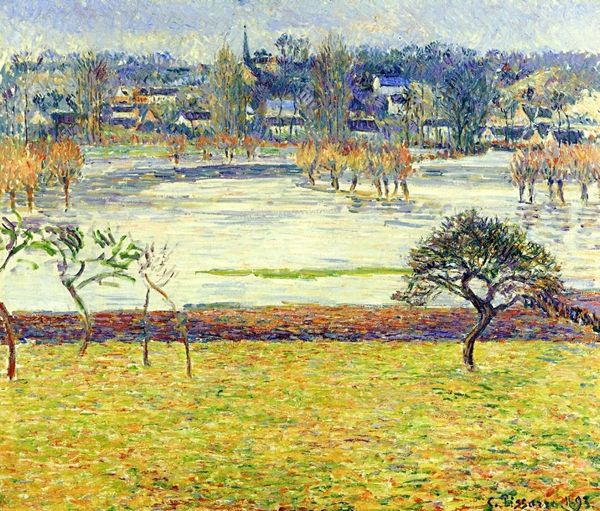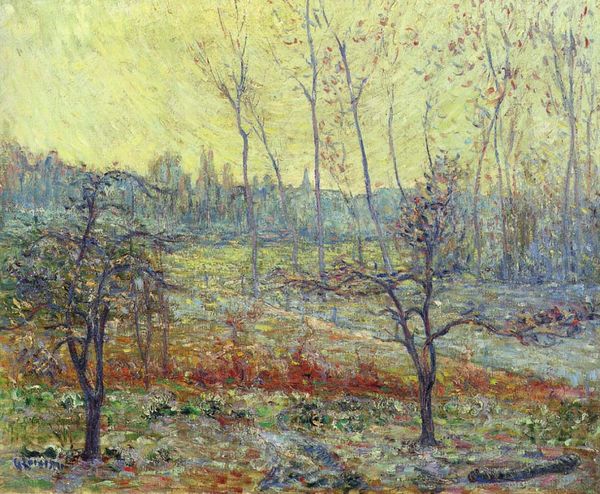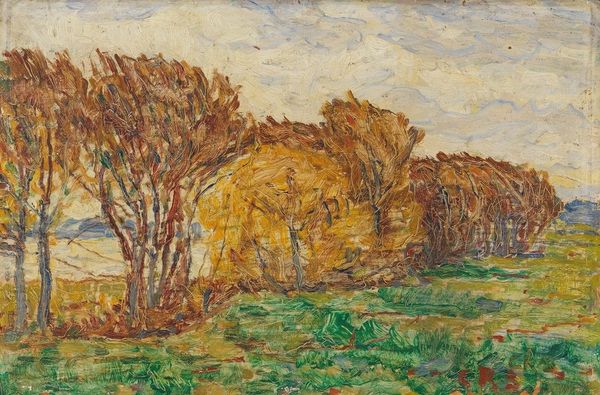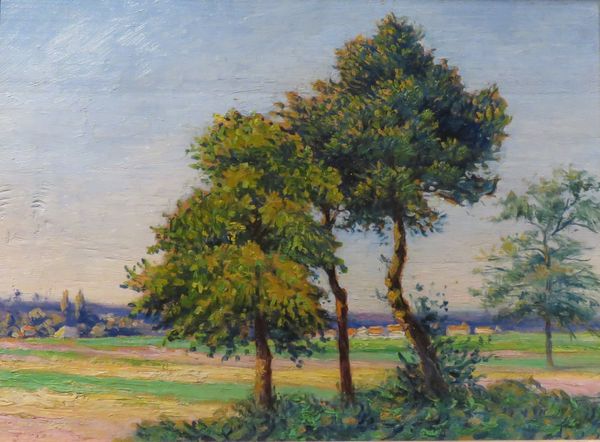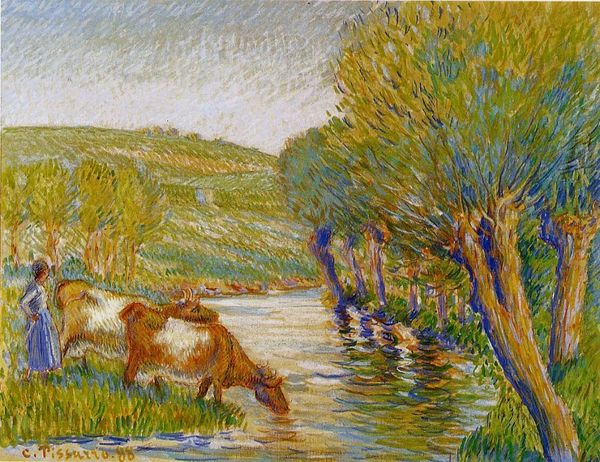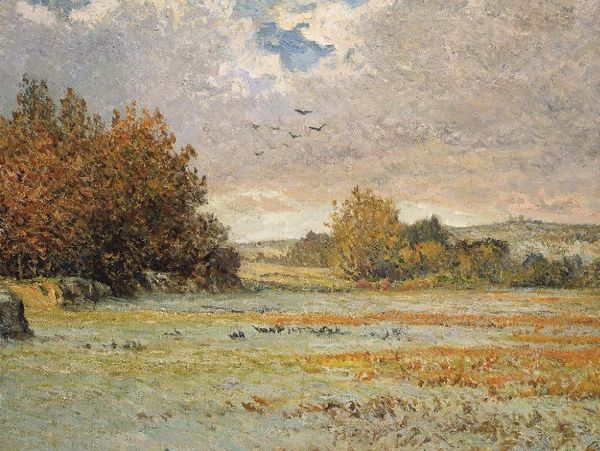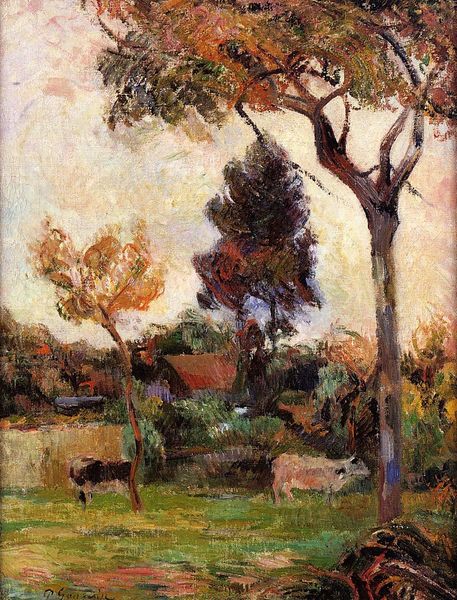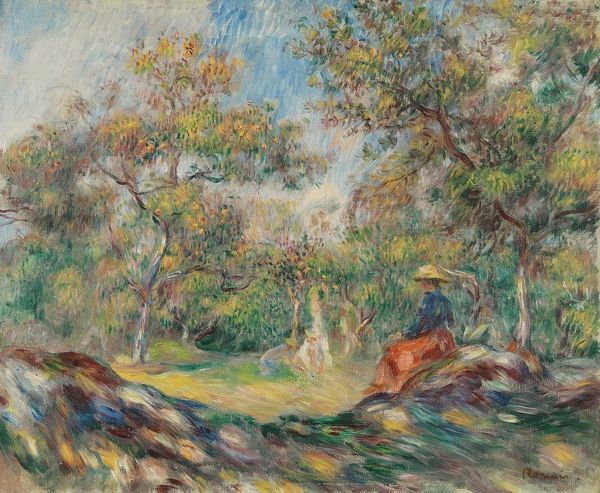
painting, plein-air, oil-paint
#
painting
#
impressionism
#
plein-air
#
oil-paint
#
landscape
#
impressionist landscape
#
realism
Dimensions: 23.5 x 15.5 cm
Copyright: Public domain
Curator: Let's explore this landscape attributed to Camille Pissarro, titled "The Hill at Vaches, Bazincourt." It appears to be rendered with oil paints in the en plein air style, very much evoking the spirit of Impressionism. What are your first thoughts? Editor: Well, immediately, I notice the subdued palette and that textured surface, built with visible brushstrokes. There's a certain rawness; a sense of a fleeting moment captured directly from observation. It is incredibly material, where the facture is concerned, and you can see how the work really embraces the capacity and capabilities of paint itself. Curator: Precisely. Look at the density of the application—it is incredibly important to understanding Pissarro’s commitment to the act of painting as much as the scene depicted. He doesn't smooth the paint to hide the brushstrokes. Editor: I am intrigued by the composition. How do you read the interplay between realism and impressionism when assessing this canvas? Curator: A crucial dialogue when observing work from the mid to late nineteenth century. The Impressionists aimed to record immediate visual sensations. As such, here, the landscape, while clearly representational, it becomes a vehicle to express those optical experiences of light, color, and atmosphere in the Vaches locality in Bazincourt, where presumably this canvas was painted. But to what degree did the labor behind painting these idyllic vistas engage with the broader realities of French society? Editor: The socio-political is central. The Impressionists, Pissarro included, often faced critique for not explicitly engaging with social issues, but that engagement in modernity as such could not be absent from the radical nature of how those artists like Pissarro depicted everyday lives, landscapes, work or leisure in newly industrialized spaces. Consider how these works were being made for a burgeoning bourgeoisie in France—was their labour erased by the appeal to the spontaneous in style? The very availability of materials made work like this possible. Curator: Fascinating points. It is about expanding how we situate an Impressionist artwork and thinking through issues of labor, access, and those processes inherent to artistic production. Thank you. Editor: Of course. Reflecting on Pissarro's "The Hill at Vaches," what stays with me is this relationship with how the artist used materials. That tension feels both expressive and thought-provoking even today.
Comments
No comments
Be the first to comment and join the conversation on the ultimate creative platform.
